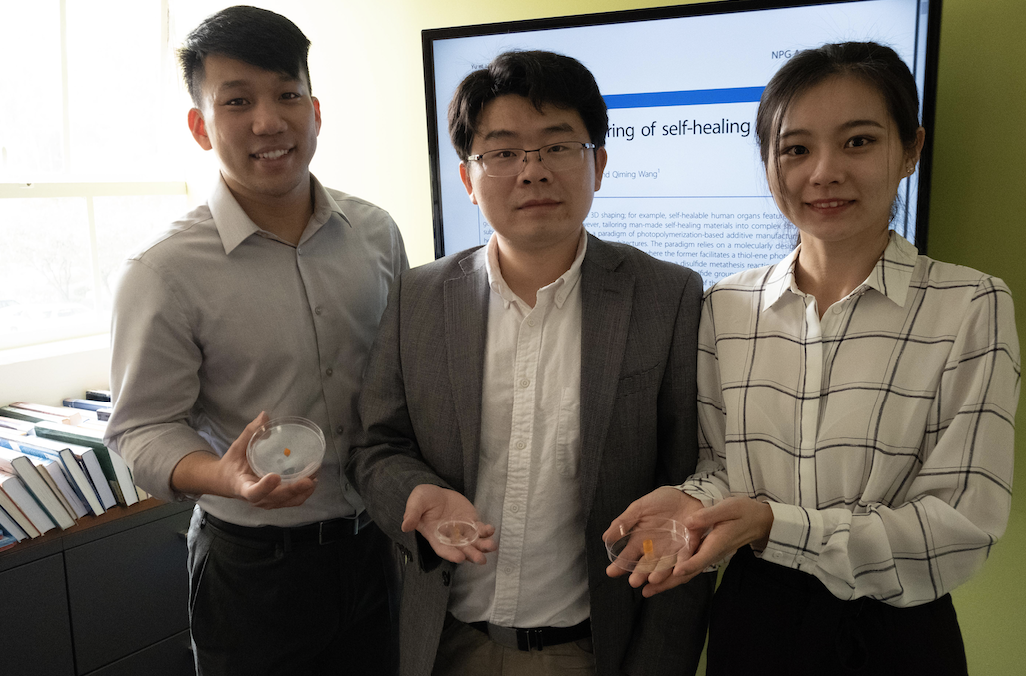Scientists develop self-repairing materials

Qiming Wang and his team first noticed organic cells’ ability in human and animal organs to self-heal while looking through microscopes. Eight months later, the assistant professor, along with three graduate students and a professor from the University of Connecticut, is building upon that discovery with self-repairing shoelaces and tires.
Wang, graduate students Kun-Hao Yu, An Xin, Haixu Du and University of Connecticut assistant professor Ying Li used 3-D printing to make the materials for mass production.
According to Wang, the team found inspiration for the project while looking at the properties of complex organic molecules in animal organs. Self-healing materials had existed before, but were never able to be produced en masse.
“Some animal organs … have very complicated structure or geometry, and also, when you have wounds or fractures, it can autonomously self-heal,” Wang said. “The existing engineering material probably, they are self-healing materials … but most of the healing materials cannot be 3-D printed into complicated structures.”
The self-healing material is made through a process called curing, which changes the properties of polymer material and makes it tougher. According to Yu, the material starts off as a liquid in a 2-D shape and is then shot with beams of light to solidify it. Then, the researchers 3-D print the structure layer by layer.
While creating the material, the team ran into some difficulties developing its chemical structure. Wang said they had trouble designing the self-healing molecules in a way that also allowed for 3-D printing.
“Basically you need to design a material [that] can be 3-D printed and also can be self-healable,” Wang said. “So how to balance these properties in a single material is a key obstacle.”
According to Yu, it took eight months of research before they were able to make the material account for both self-healing and 3-D printing properties.
“We finally find the correct amount of the [chemical] we need,” Yu said. “And then we find a very good ratio [for] a rapid 3-D printing time, and also … good healing efficiency.”
Wang said he is hopeful for future applications of this material, which he wants to market to both civilians and the government. The team plans to begin with the shoewear and tire industry.
“The most immediate application is footwear,” Wang said. “So actually after our paper [was] published a number of footwear companies contacted us, including Reebok, Red Wing Shoes … their vision is … to push out shoes that are self-healable.”
According to Wang, research to create self-healing shoes and tires will take two to three years. After implementation, these products will be available on retail market.
The study is funded by Air Force Office of Scientific Research Young Investigator Program and the National Science Foundation, which hopes to produce military armor and vehicle alterations.
“[The Air Force] funded our research because they want to 3-D print airplane wings in the future, and … soldier armor, and make those structures self-healable,” Wang said. “When you have bullets coming in, or you have damage … or impact, it [will] self-heal.”
The team plans to create self-healing uniforms and other applications in the military. However, Wang said military implementation will take several years to achieve. He said getting approval could take up to 10 years.
The team already has a patent on their production process and is planning on continuing their research until commercial use is possible, Yu said.

